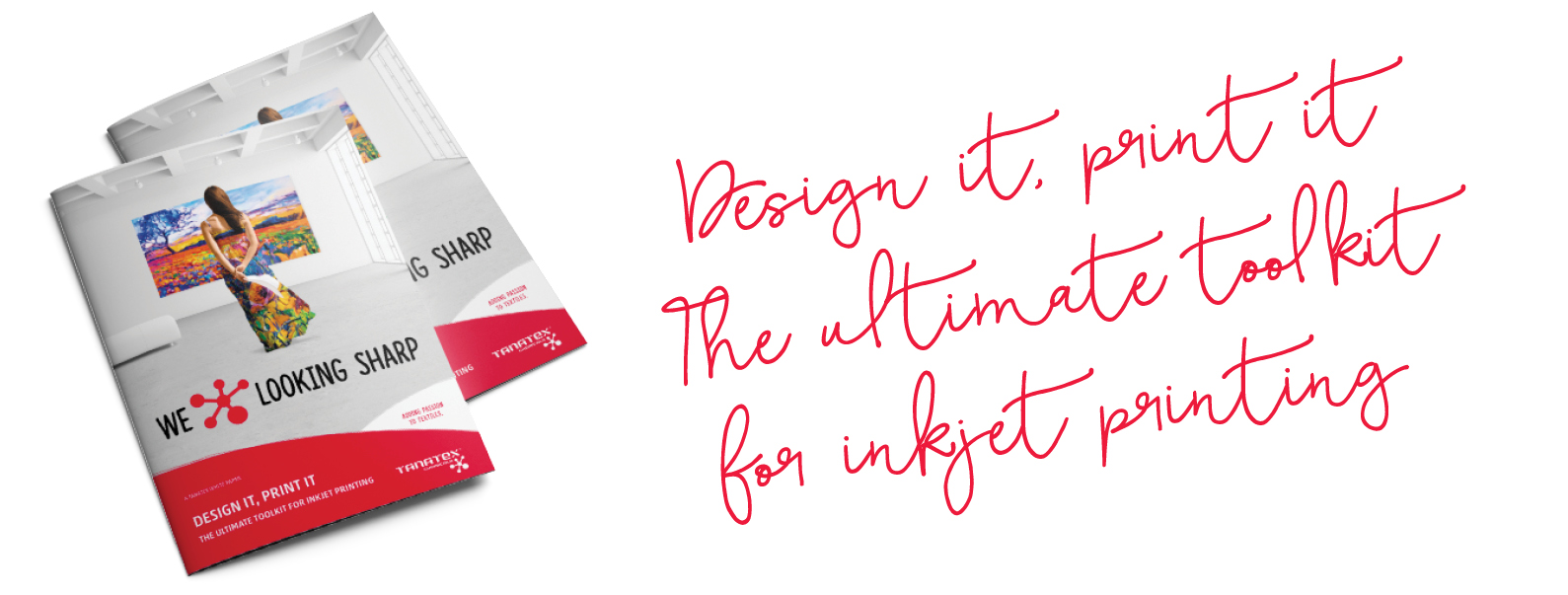When you’re prepared for digital printing, but your fabric isn’t
As a textile manufacturer, chances are high you’re a digital printing enthusiast. We’re with you on that. Digital printing is slowly but surely gaining ground in the textile industry as it brings more flexibility and more speed. Those are all welcome advantages, given the high customer demands and large variety of designs produced daily. But ready as you may be to go digital; your fabrics often need a little help. In this article, we tell you how you can make your fabrics Prepared For Digital Printing (PFDP).
Fabric preconditions for digital printing
Prepared for Printing fabric
- Free of impurities
- Hydrophilicity
- No residual sizing agent
- High basic white
Prepared for Digital Printing fabric
- The fabric is treated with preparation chemicals for inkjet printing
PFD, PFP or PFDP?
Despite its popularity, digital printing is relatively new. This is why many digital textile printers still use regular fabrics. These traditional fabrics however are often not suitable to undergo a digital printing process, because of many different factors. For example, they may still contain oil from the spinning or weaving process, which can lead to poor ink fixation, unlevelness, or low fastness level.
This doesn’t mean that you can’t print on your own fabrics, though! You just need to take a few factors into account. Together, these factors determine whether your fabrics are PFD (Prepared for Dyeing), or as printers call it: PFP (Prepared for Printing). When your fabrics are prepared for printing, you can move onto the second stage; PFDP (Prepared for Digital Printing). This is when you treat a PFP fabric with preparation chemicals so its ready for digital printing. Still with us?
The PFP checklist
Let’s look at the most important fabric preconditions for PFP. First, make sure your fabrics are cleaned properly. Cellulosic fabrics contain oil, wax and metals that meddle with colour tone and ink penetration. Synthetic fibres such as polyester don’t have that problem, but they do contain minerals and silicone oils to make weaving and knitting possible. This needs to be washed off during the pre-treatment process. As is the case with traditional printing and dyeing, the fabric’s hydrophilicity needs to be controlled and be reproducible. Sizing agents are used to protect the yarns against damage during the weaving process but they’re unwanted in an inkjet process. Therefore proper size elimination is crucial for good inkjet printing. Finally, the whiteness of the fabric influences both the prints’ colour yield as well as the depth of the print. The higher the basic white, the more brilliant and intense the results will be.
At the bottom of this page, you can find a simple guide to test your fabric for meeting the PFP preconditions.
Preparing your fabric for Digital Printing
If you’re aiming for high quality digital printing results, treating your PFP fabrics with inkjet preparation chemicals is an absolute must. PFDP fabrics ensure sharper prints, deeper shades and will save you up to 30% on ink usage. You can either purchase fabrics that are made PFDP for you, or prepare your own fabric for digital printing. This is easier than you might think! You only need a inkjet preparation recipe and a sharp eye for quality to start.
After testing your fabrics to see if they live up to all the PFP preconditions, you’re ready to prepare your fabric for digital printing. Most textile professionals do this by foulard application, but in fact any print screen, spray or valve jet application will do the trick. As with all textile chemistry, the better the recipe is tailored to your application process, the type of ink and substrate, the better the end result will be.
The road to perfect
When you follow the steps in this article, you’ll soon find your fabrics just as ready for digital printing as you are. You did all the hard work switching to the digital approach; the quality might as well be perfect, right? When you invest in fabrics that are prepared for digital printing, you’ll benefit from high quality and a consistency that will make your direct customers and their buyers happy. A fine goal, we reckon.
Do you want to know how to prepare your fabrics for digital printing? In our white paper, we hand you a free manual to start immediately. For example, the whitepaper contains testing instructions to determine if your fabric meets the PFP preconditions and a guide to select the right preparation recipe for your application process.






